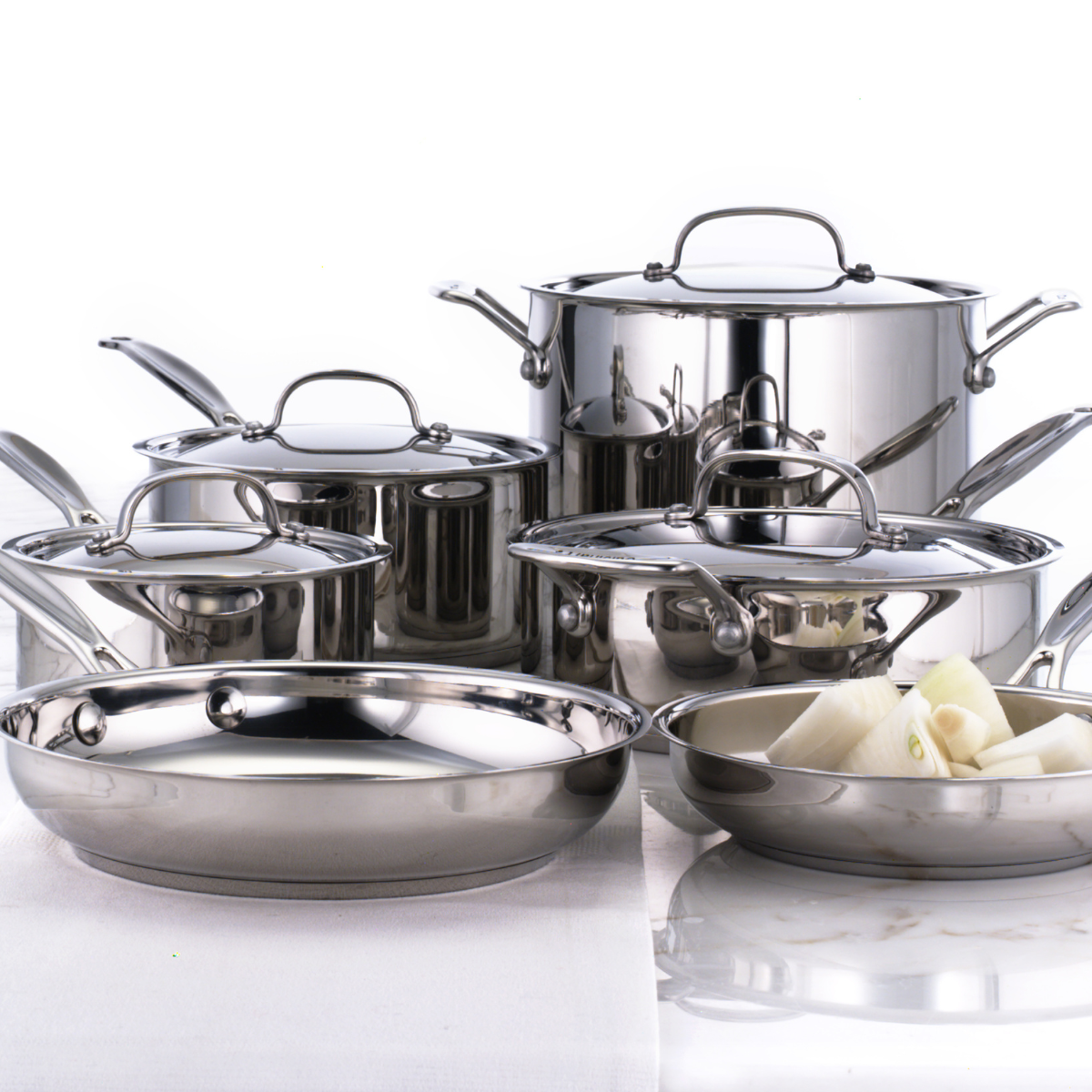The Ultimate Guide to Choosing the Healthiest Pots and Pans for Your Kitchen
When it comes to cooking, having high-quality and healthy pots and pans is essential. Not only do they make cooking easier, but they also ensure that your food is prepared in a safe and healthy manner. In this comprehensive guide, we will explore the different materials used in pots and pans, discuss their health benefits, and provide valuable tips on how to choose the healthiest cookware for your kitchen. Whether you’re a seasoned chef or a cooking enthusiast, this article will help you make an informed decision while shopping for pots and pans that prioritize your health and well-being.
- Section 1: Exploring Healthy Pot and Pan Materials
1.Stainless Steel: The Versatile and Durable Choice Stainless steel is a popular material for pots and pans due to its versatility and durability. It conducts heat efficiently and evenly, allowing for precise cooking control. Stainless steel is non-reactive, meaning it won’t interact with acidic or alkaline ingredients, ensuring the integrity and flavor of your food. Look for high-quality stainless steel cookware with a thick base for better heat distribution and longevity.

2.Cast Iron: Even Heat Distribution and Longevity Cast iron cookware is known for its excellent heat retention and even heat distribution. It provides a natural non-stick surface when properly seasoned, reducing the need for excessive oil or fat. Cooking with cast iron can increase iron intake, which is beneficial for those with iron deficiencies. However, cast iron requires regular seasoning and proper maintenance to prevent rusting and maintain its non-stick properties.

3.Copper: Quick and Efficient Heat Conduction Copper cookware offers exceptional heat conductivity, allowing for precise temperature control and quick heat response. It ensures even cooking throughout the pan, reducing the risk of hot spots. Copper also adds an aesthetic appeal to the kitchen. However, pure copper cookware can react with certain foods, leading to potential health risks. Look for copper cookware with a stainless steel or tin lining to mitigate this issue.

4.Glass: A Safe and Non-reactive Option Glass pots and pans are a safe and non-reactive choice for those seeking healthy cookware. They are free from chemicals and coatings that may leach into your food. Glass is also resistant to staining and odors, making it easy to clean and maintain. However, glass cookware may not distribute heat as evenly as other materials, so it’s important to monitor your cooking carefully to avoid burning or uneven cooking.

5.Granite: Heat Resistant and Easy to Clean Granite cookware is relatively new but gaining popularity due to its high heat resistance and non-stick properties. It is made by applying a granite-like coating to the surface of the cookware, providing a durable and easy-to-clean cooking surface. Granite pans and pots require less oil for cooking, promoting healthier cooking practices. However, it’s important to choose granite cookware from reputable brands to ensure the coating is safe and long-lasting.

Section 2: Factors to Consider for Healthy Cookware Selection
1.Avoiding Coated Surfaces for Better Health When choosing healthy cookware, it’s best to avoid non-stick coatings such as Teflon (polytetrafluoroethylene or PTFE) or ceramic coatings that may release harmful fumes when overheated. Opt for cookware with natural non-stick properties like well-seasoned cast iron or high-quality stainless steel.
2.Prioritizing Material Safety and Durability Choose cookware made from materials that are safe for cooking and free from harmful substances. Look for certifications such as NSF (National Sanitation Foundation) or FDA (Food and Drug Administration) approval. Additionally, consider the durability of the cookware to ensure it can withstand regular use and maintain its quality over time.
3.Choosing the Right Size and Shape for Your Needs Consider the size and shape of the pots and pans based on your cooking requirements. Having a variety of sizes allows for versatility in preparing different dishes. Ensure the cookware has sufficient depth to prevent food from overflowing or sticking, promoting healthier cooking practices.
4.Examining Handle Quality and Safety Check the handles of the cookware for ergonomic design and heat resistance. Heat-resistant handles reduce the risk of burns and provide better control while cooking. Avoid cookware with handles made of low-quality materials that may break or become loose over time.
5.Verifying Manufacturer’s Certifications and Quality Standards Prioritize cookware from reputable manufacturers that adhere to strict quality standards. Look for certifications such as ISO (International Organization for Standardization) or BPA (Bisphenol A) free labels for added assurance of the cookware’s safety and quality.
Section 3: Maintaining Healthy Cookware for Longevity
1.Proper Cleaning and Care for Different Materials Follow the manufacturer’s instructions for cleaning and maintaining your specific cookware material. Stainless steel, cast iron, and glass cookware are typically dishwasher safe, but it’s best to hand wash copper and granite cookware to preserve their quality. Avoid using abrasive cleaners or metal utensils that can damage the cooking surface.
2.Storing Cookware to Prevent Damage and Contamination Store cookware properly to prevent scratches, dents, and contamination. Use protective padding or soft liners when stacking pots and pans to prevent surface damage. Ensure the cookware is completely dry before storing to prevent moisture-related issues such as rust or mold.
3.Recognizing Signs of Wear and Replacement Regularly inspect your cookware for signs of wear, including chipping, peeling, or significant scratches. These signs can affect the cookware’s performance and safety. If the integrity of the cookware is compromised, consider replacing it with a new, healthier option to maintain optimal cooking conditions.
By understanding the different materials used in pots and pans, considering important factors when choosing cookware, and practicing proper maintenance, you can confidently select and use the healthiest pots and pans for your kitchen. Prioritize your health and well-being by investing in cookware that promotes safe and nutritious cooking, ensuring that every meal you prepare is both delicious and healthy.


